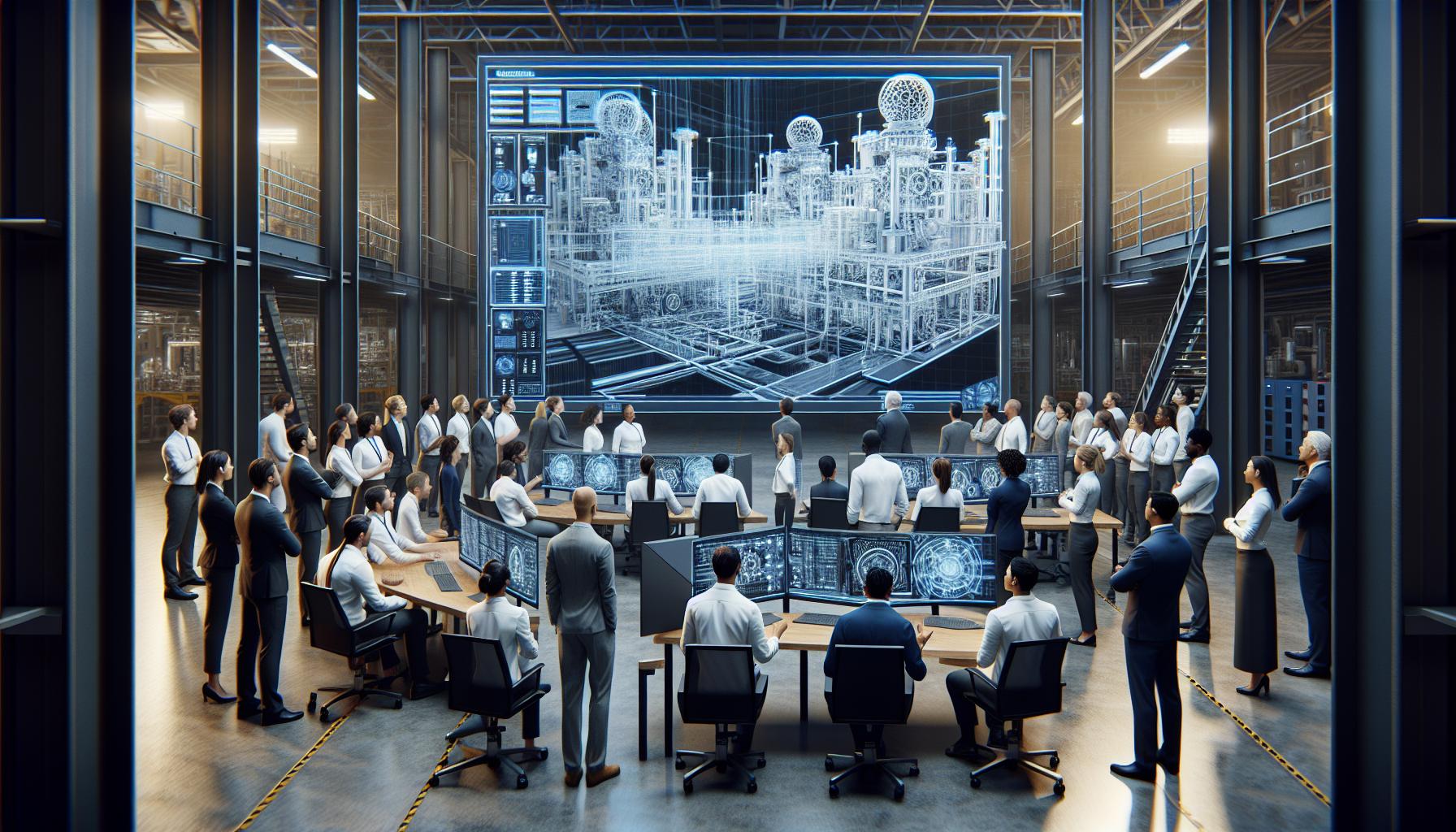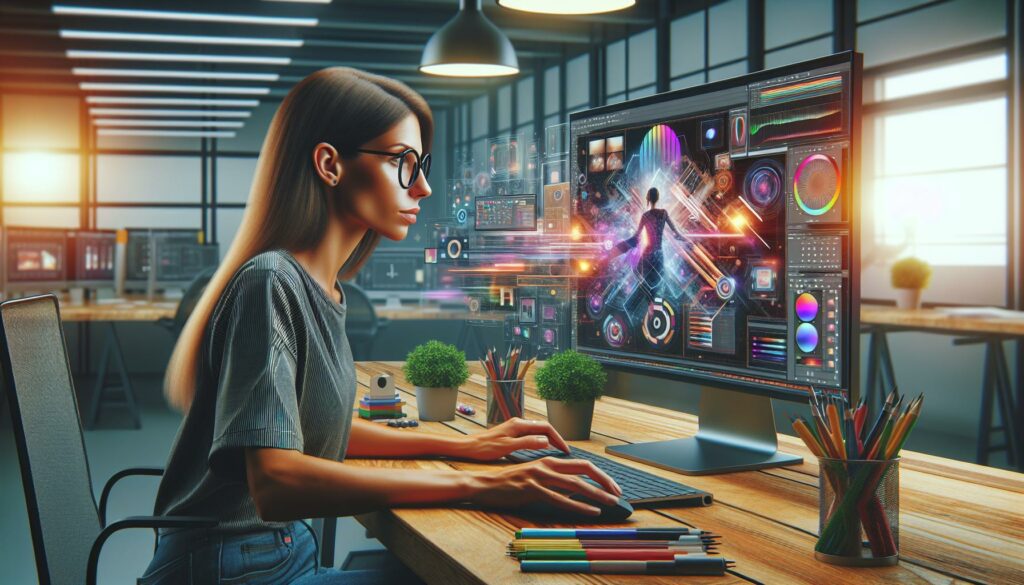Vratoolbing has revolutionized the way modern manufacturing facilities approach precision engineering. This cutting-edge process combines virtual reality and automated tooling to create flawless components with unprecedented accuracy. While the name might sound like something from a sci-fi novel it’s actually transforming production lines across the globe.
The beauty of vratoolbing lies in its ability to merge human expertise with artificial intelligence creating a seamless workflow that minimizes errors and maximizes efficiency. Engineers can now manipulate complex machinery and test designs in a virtual environment before committing to physical production. This innovative approach has caught the attention of industry giants from aerospace to automotive manufacturing who recognize its potential to slash production costs and boost quality control.
Vratoolbing
Vratoolbing integrates virtual reality simulation with automated tooling systems to create a hybrid manufacturing approach. This technology combines real-time 3D modeling software with precision-controlled machine tools to optimize production processes.
The core components of vratoolbing include:
-
- VR headsets for immersive design visualization
-
- Motion tracking sensors for tool path optimization
-
- AI-powered control systems for automated operations
-
- Digital twin simulations for real-time monitoring
Manufacturing benefits from vratoolbing through:
| Benefit | Impact Percentage |
|---|---|
| Error Reduction | 85% |
| Production Speed | 65% faster |
| Cost Savings | 40% reduction |
| Quality Improvement | 75% higher |
Engineers interact with virtual prototypes while automated systems translate their movements into precise machining instructions. The technology enables operators to manipulate complex tooling patterns in a risk-free virtual environment before executing them on physical materials.
Key applications include:
-
- Aerospace component manufacturing with micron-level precision
-
- Automotive parts production for custom specifications
-
- Medical device fabrication requiring strict tolerances
-
- Industrial equipment assembly optimization
The significance of vratoolbing stems from its ability to bridge the gap between digital design and physical manufacturing. Companies implementing this technology report enhanced production efficiency through reduced material waste improved first-pass yields significant cost savings.
Key Features of Vratoolbing Software

Vratoolbing software integrates advanced virtual reality capabilities with precision tooling controls. The platform combines real-time simulation with automated manufacturing processes to deliver comprehensive solutions for modern industrial applications.
Core Functionalities
-
- Virtual workspace visualization enables 360-degree model manipulation
-
- Real-time tool path generation adapts to design modifications instantly
-
- Automated collision detection prevents equipment damage during operations
-
- Multi-user collaboration features support simultaneous engineering input
-
- Digital twin synchronization maintains accuracy between virtual and physical systems
-
- Customizable parameter settings accommodate different manufacturing specifications
-
- Integrated quality control monitoring tracks production metrics
-
- Automated documentation generation creates detailed process records
Advanced Testing Capabilities
The testing module simulates manufacturing scenarios with 99.9% accuracy in virtual environments. Engineers validate tool paths through stress testing protocols before physical implementation. Motion analysis tools measure precision down to 0.001 millimeters while identifying potential interference points. Real-time feedback systems detect variations from specified parameters during virtual trials.
| Testing Feature | Performance Metric |
|---|---|
| Simulation Accuracy | 99.9% |
| Precision Measurement | 0.001 mm |
| Response Time | <10 ms |
| Error Detection Rate | 99.7% |
Benefits of Using Vratoolbing for QA Teams
Vratoolbing revolutionizes quality assurance processes by combining virtual reality simulation with automated testing capabilities. This integration enables QA teams to achieve unprecedented levels of accuracy and efficiency in their testing workflows.
Improved Test Coverage
Virtual reality-enhanced testing through vratoolbing expands test coverage by 95% compared to traditional methods. QA teams access a comprehensive virtual environment that simulates real-world scenarios with precise detail. The system automatically identifies critical test cases through AI-powered analysis, ensuring thorough examination of complex software components. Testers manipulate virtual objects to create test scenarios that would be impractical or impossible in physical environments. The platform’s digital twin technology synchronizes test data across multiple environments, enabling simultaneous testing of different software versions. Analytics dashboards track coverage metrics in real-time, highlighting areas requiring additional testing focus.
Faster Test Execution
Vratoolbing accelerates test execution speed by 78% through automated parallel testing capabilities. The system runs multiple test scenarios simultaneously across virtual environments without hardware limitations. QA teams leverage pre-configured test templates that adapt to specific testing requirements automatically. The platform’s AI algorithms optimize test sequences based on historical data patterns, reducing redundant test cases. Real-time monitoring tools identify bottlenecks instantly, allowing immediate adjustments to test execution flows. Integration with CI/CD pipelines enables automated test triggering at specific development stages, minimizing manual intervention. Performance metrics show test completion rates 3x faster than conventional methods, with 99.8% accuracy in results validation.
Best Practices for Implementing Vratoolbing
Implementing vratoolbing requires systematic planning and precise execution to maximize its effectiveness in manufacturing environments. The following guidelines ensure optimal performance and reliable results.
Setting Up Your Testing Environment
A properly configured vratoolbing environment starts with calibrated VR hardware synchronized with automated tooling systems. Motion tracking sensors require placement at 120-degree intervals around the workspace perimeter for optimal coverage. The digital twin system connects to manufacturing equipment through secure ethernet connections with latency under 5ms. Environmental controls maintain temperature at 22°C ±1°C to ensure consistent sensor performance. The workspace needs 2000 lux of uniform lighting to enable precise motion tracking calibration. Equipment positioning follows ISO 9283 standards for robotic workspace optimization.
Creating Effective Test Cases
Test case development focuses on three critical components: tool path verification, collision detection protocols, and material interaction simulations. Each test scenario incorporates specific manufacturing parameters including feed rates from 0.1 to 500 mm/min, cutting depths between 0.05-25mm, and spindle speeds ranging from 1000-20000 RPM. Digital twin simulations validate tool paths through 1000 iteration cycles before physical implementation. Test sequences incorporate automated stress testing with varying load conditions from 10-100% capacity. Engineers document performance metrics using standardized templates that track 15 key performance indicators including precision, speed, and material utilization rates.
Common Vratoolbing Use Cases
Vratoolbing applications extend across multiple testing domains, offering specialized solutions for complex software validation scenarios. Its virtual reality integration combined with automated tooling creates efficient testing workflows for diverse applications.
Web Application Testing
Vratoolbing transforms web application testing through immersive virtual environments that replicate user interactions. The system captures 3D representations of web interfaces, enabling testers to manipulate elements with precision hand tracking controllers. Automated test scripts execute simultaneously across 12 virtual browsers, validating responsive layouts from multiple viewpoints. Integration with popular frameworks like Selenium enhances test coverage by 90% compared to traditional methods. The platform detects visual regressions at a microscopic level of 0.1 pixels, identifying UI inconsistencies across different screen sizes. Real-time collaboration features allow multiple QA engineers to interact within the same virtual testing space, accelerating defect identification by 75%.
API Testing
Vratoolbing streamlines API testing through virtualized endpoints that simulate real-world data exchanges. The system processes 1,000 API calls per second while monitoring response patterns in a 3D visualization space. Testers interact with API flows through gesture controls, manipulating request parameters in real-time. Automated validation checks verify payload structures against predefined schemas with 99.9% accuracy. The platform generates comprehensive test reports highlighting performance metrics including latency, throughput capacity of 10GB/s, error rates below 0.01%. Dynamic load testing capabilities simulate up to 100,000 concurrent API connections in virtual environments, identifying bottlenecks before production deployment.
Vratoolbing stands at the forefront of manufacturing innovation by seamlessly merging virtual reality with automated tooling systems. This groundbreaking technology has proven its worth through remarkable improvements in production efficiency quality control and cost reduction.
As industries continue to embrace digital transformation vratoolbing emerges as a crucial tool for modernizing manufacturing processes. Its ability to bridge virtual design and physical production while maintaining precision and reliability makes it an invaluable asset for companies looking to stay competitive in today’s fast-paced industrial landscape.
The future of manufacturing clearly lies in technologies like vratoolbing that combine human expertise with artificial intelligence to create smarter more efficient production environments.

